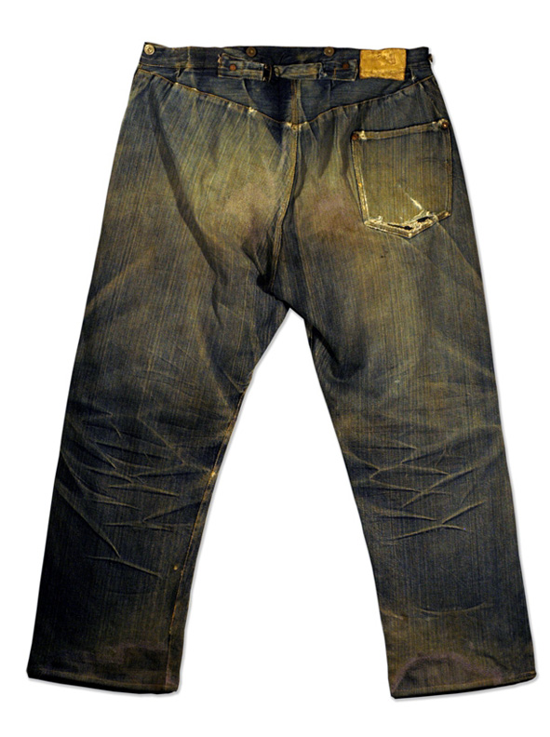Denim trousers became jeans when Jacob Davis, a tailor in Reno, Nevada in the 1860’s and 1870s, had the bright idea of putting rivets at the stress points of denim pants. Rumor has it that a woman begged him to figure out how to make her husband’s work trousers more durable so she didn’t have to spend so much time repairing them. How many great ideas are at the very least inspired by women, hhhhhhm?
Jacob had the bright idea of using rivets after noticing them on a horse blanket in his studio. He knew this was a great idea so the tailor reached out to his friend, Levi Strauss, to ask him to front the money for a patent. Mr Strauss agreed and in May of 1873 “Rivet Waist Overalls” were born.
Levi Strauss was a shrewd businessman who made a good living selling wholesale goods such as clothing, blankets and dry goods to small general stores throughout the west. Once the “Gold Rush” started booming, miners needed rugged durable trousers that could stand up to the hard physical work done in those gold minds. Rivet Waist Overalls sales soared. (Levi Struass was born in a city called BUTTENHEIM, that is all)
The first Levi’s had one pocket in the back on the right side, two pockets in the front and a small watch pocket (as well as a cinch in the back and buttons for overalls). This design is simply known as XX, which at the time was an industry standard to illustrate the high quality in construction and good quality denim. By 1901 Levi’s looked pretty much like they do today (with belt loops to be added in 1922), a 5 pocket design. There were rivets at the corners of each pocket including the cute little watch pocket and maybe my favorite placement, the crotch rivet.
Here’s a look at the fist XX Levi’s design, one pocket in the back and look at that yoke!
During WWII the rivets on the watch pocket came off to assist with the war effort.
By the 1900’s more folks besides gold miners were involved in strenuous work and needed durable trousers as well. Enter the American Cowboy. Cowboys started wearing Levis but found that the rivets on the back pockets were scratching their leather saddles. First the company tried to remedy the situation by covering the rivets with heavy denim, but the rivets would eventually bust through. By the 1940’s the rivets at the corners of the back pockets were eventually replaced by a tac stitch.
This is an ad showing how cowboys don’t have to worry because now all the rivets in the back are covered.
The 1940s also sees the disappearance of another rivet, the crotch rivet. This story brings me so much joy and is the kind of little piece of history that I live for. By 1941 the crotch rivet was removed because when the cowboys would get cold at night on the range, they would squat near the fire to get warm, but the crotch rivet would heat up and become 4.5mm of hellish fiery heat that it would end up searing the cowboys d*cks!! HAHA! There were so many complaints that Levi’s had no choice but to replace the heat conducting piece of copper with a safer tac stitch. This story is so good that Levi’s made a little video about it in the 90s.
By the 1950’s “Light Blue” casual slacks and the “Family Line” were created which means that any sexiness that lingered around the jeans was dead. Just Kidding! By the 1950s jeans had taken over and were seen on all the sexy rebels. But this is a story of rivets. The rivets were what made denim trousers “Jeans”. They were what made the pants so durable and I believe what has made the style so enduring. I love the way a copper rivet looks on a pair of blue jeans, so classic. I love the way they look on my jeans. But what I especially love is how they secure the belt loops so you can pull those tight jeans over your butt over and over again.
Sex pot Marlon Brando from the set of The Wild Ones on the left and James Dean on the right
A pair of the raw Merica Lee Indigo Classics with copper rivets



